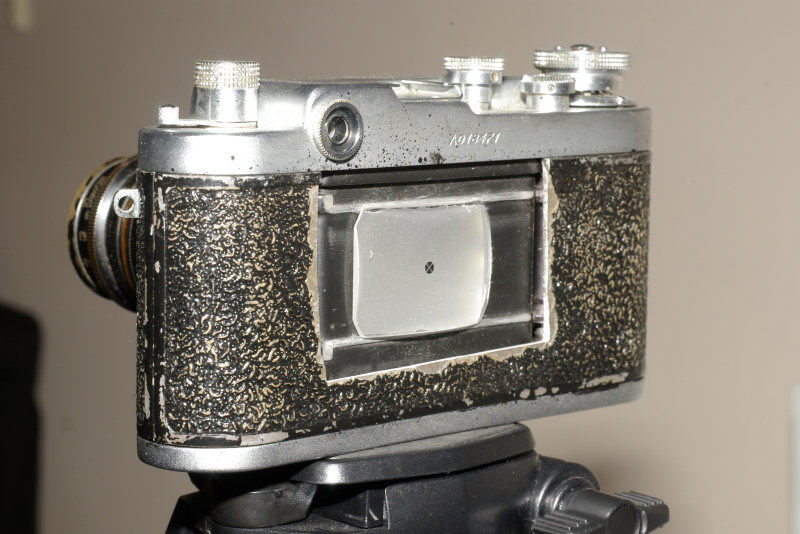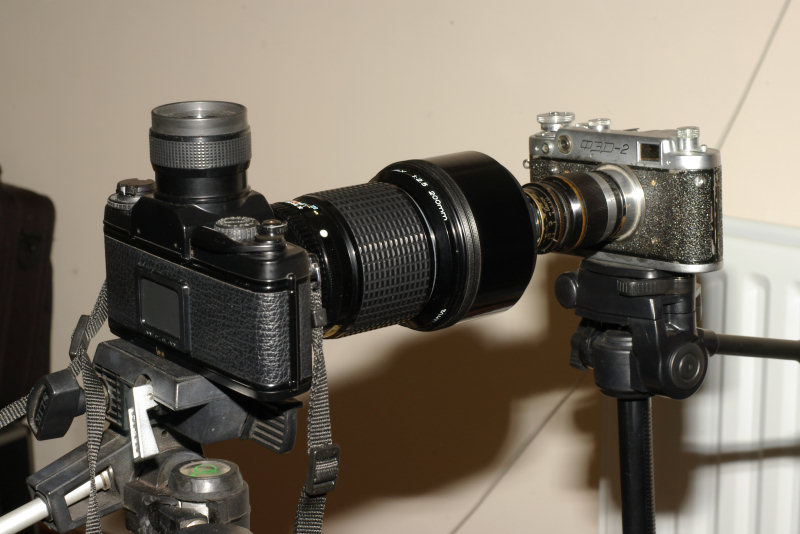Kim Coxon
Moderator
I hope to write a full DIY guide as soon as I get some time but several people have asked what I use to adjust a lens. To start with, checking/adjusting the infinity focus of a lens.
Having done a couple, I got an old FED 2 body and hacked it. (the shutter was torn to shreds etc but the RF was good. Cut a hole in the back and fixed a new focus screen from and early Pentax to the rails. Then using a known good lens, I carefully set up the RF. If you are only doing the odd lens, use an RF camera with an opening or removable back. In this case lightly tape the screen in place. You can also check a body using this method if you use a known good lens. 😉

To get the lens is focussing correcting at infinity, either use it outside on a good day. Point the rig at the furthest object and check the focus on the screen using a lupe. If you don't mind doing it at night, the moon is preety good for infinity. If your eysight is not too good, use the indoor method of using an SLR to check it. The longer/faster lens you use, the more accurate the results. I normally use the Pentax 200mm F2.5 for this on the LX with the mag finder on. With both lenses set to infinity, the screen on the RF camera should be in focus. If not, turn the focus ring on the RF lens. If it gets worse, you will pobably need to reduce the thickness of the shims. If it comes into focus, you need to increase them.
The test setup checking a 9cm Elmar.

Kim
Having done a couple, I got an old FED 2 body and hacked it. (the shutter was torn to shreds etc but the RF was good. Cut a hole in the back and fixed a new focus screen from and early Pentax to the rails. Then using a known good lens, I carefully set up the RF. If you are only doing the odd lens, use an RF camera with an opening or removable back. In this case lightly tape the screen in place. You can also check a body using this method if you use a known good lens. 😉

To get the lens is focussing correcting at infinity, either use it outside on a good day. Point the rig at the furthest object and check the focus on the screen using a lupe. If you don't mind doing it at night, the moon is preety good for infinity. If your eysight is not too good, use the indoor method of using an SLR to check it. The longer/faster lens you use, the more accurate the results. I normally use the Pentax 200mm F2.5 for this on the LX with the mag finder on. With both lenses set to infinity, the screen on the RF camera should be in focus. If not, turn the focus ring on the RF lens. If it gets worse, you will pobably need to reduce the thickness of the shims. If it comes into focus, you need to increase them.
The test setup checking a 9cm Elmar.

Kim

